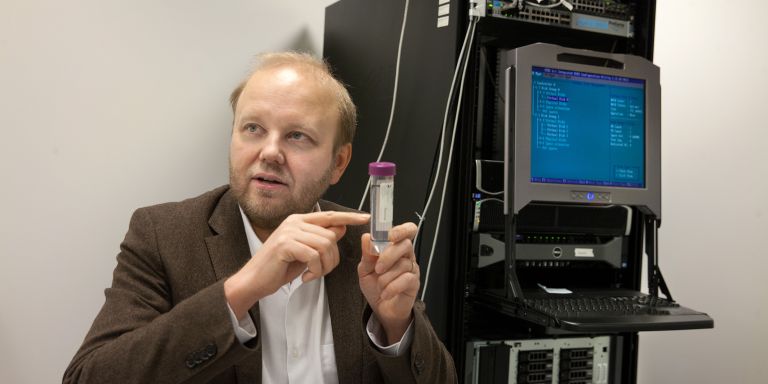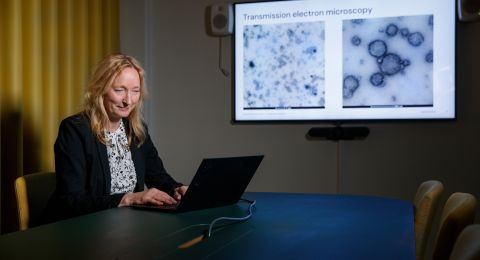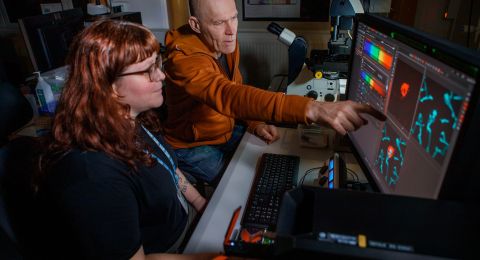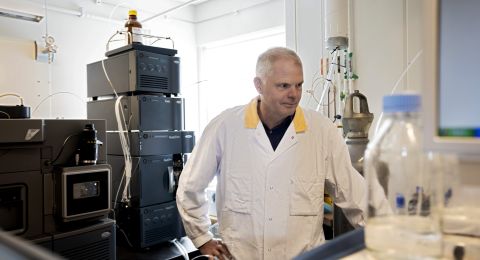
Project Grant 2013
Growth control and cancer
Principal investigator:
Jussi Taipale, Professor of Medical Systems Biology
Institution:
Karolinska Institutet
Grant in SEK:
SEK 38.9 million over five years
It is almost 15 years since human DNA was mapped, in one of the greatest scientific breakthroughs of all time. The entire human genome is made up of approximately three billion pairs, which in turn form some 20,000 genes. The technology is now so inexpensive that huge quantities of data can be produced from a scan of an individual subject’s DNA. This gives the hope of being able to understand the mechanisms behind serious diseases, and also to develop tailored treatments for cancer and other conditions.
“We can begin to understand why some individuals have a predisposition for various diseases, although the correlations involved are complicated,” says Jussi Taipale, Professor of Medical Systems Biology at Karolinska Institutet.
Jussi’s research team is working to understand “transcription”, the mechanism that determines when and where genes are expressed. A specific group of proteins known as “transcription factors” read the code. They recognize and bind to specific sequences of the DNA. However, the researchers still know very little about the sequences of the DNA that transcription factors bind to – and why.
“We understand the language of DNA in conceptual terms. For example, consider the language of DNA as you would the Spanish language. I know that Spanish is a language made up of sentences and that the letters used are the same as in Swedish or English. The sentences also have an object and a subject. But notwithstanding this information, I cannot read Spanish because I do not understand the words,” Jussi explains.

Hundreds of genes linked to cancer
Previous research has shown there to be a large number of genes that can trigger abnormal cell growth and more than 300 different genes can be linked to cancer, many of which are also closely related to the transcription process. Several cancer genes are either components in signal paths regulating the activity of transcription factors or themselves act as transcription factors.
“The most important element of our project is therefore to understand the mechanisms behind transcription – the factors governing growth of normal tissue and in tumor cells. The aim is to gain an understanding at the system level of the entire network surrounding transcription.”
Genetic material from many individuals
Comprehensive association studies are one of the methods used. These involve gathering genetic material from a large number of individuals and comparing genes in different positions with different properties. If genes are found with previously documented deviations involving an elevated risk of disease, these can be used as markers for making more in-depth analyses.
“Among other things, we have found a specific transcription factor that binds more strongly to a DNA sequence found in some individuals with a higher risk of prostate cancer. A similar discovery has been made for cancer of the large intestine.”
The emphasis is now on interpreting the individual variations in DNA and how they more specifically influence the risk of disease, particularly cancer. Nevertheless it is a challenge to manage the large quantities of data produced. Jussi points out that the technology has developed beyond all recognition and changed the playing field for research.
“We are now able to gather enormous quantities of information in a relatively short space of time, but the research still takes a long time to carry out. It can take a whole year to go through all the data. The analytical phase is becoming increasingly important, so better software is needed that can find specific and relevant patterns.”

Harder to make fundamental discoveries
The changes taking place are also reflected in the composition of the research team, projects are becoming increasingly interdisciplinary. In particular the number of data engineers has risen, but it is not necessarily easier to make a major breakthrough.
“We know so much already that it is getting harder and harder to make completely new discoveries. If we go back 50 years, researchers in our field could study almost anything and make ground-breaking discoveries about how cells work. It was a blank sheet. Now much more care has to be taken when choosing the research path to follow in order to break new ground.”
Yet Jussi has played a part in discoveries that have yielded results. At Johns Hopkins University in the U.S. his team published findings that were snapped up by a pharmaceutical company and could be used to develop a new drug.
“Although we know nothing yet about the medicines or treatments that may results from this research.” Jussi says. “Once we know how gene expression is controlled, the next step will be to create a model for how combinations of factors regulate gene expression in normal cells and in cancer cells, for example. Hopefully, this may improve our knowledge of the mechanisms behind common diseases.”
Text Nils Johan Tjärnlund
Translation Maxwell Arding
Photo Magnus Bergström



